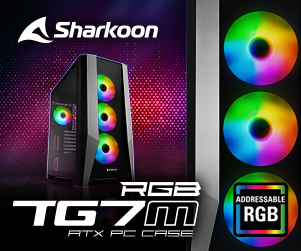Subjective sound check
After all the technical details, we finally get to the most important part: how does the headset actually sound? We now continue where it hurts a bit more: namely the individual listening test. The headset was diligently played in, so this argument is no longer applicable. I used my Tidal playlist with classical, jazz, rock, electronic music and various vocals (soul, choir music) as well as some gaming, of course.
Bass range
Music: The headset fails at the subcontraoctave and also weakens at the volume, which degenerates to an acoustic nothing without manual tweaking on an equalizer. The drivers do not have an extreme tendency to resonate, but if you grease the bass too much, it gets a bit unsightly. The contraoctave including the big bass drum is only half-heartedly present and unfortunately also a bit spongy and imprecise. The bass is there, but too pale for most. Listening habits certainly play a big role here. The level stability is only average and not extremely high. Without maximum gain, nothing works anyway.
Gaming: For gaming, the grenades could rumble a bit more massively and dryly, but you can still hear everything above the mids in parallel, as long as you don’t overdo it with the level on the equalizer, before the upper end is pushed away by the bass. The differentiation of the individual sound layers and frequency ranges is still quite possible, though. Besides the volume, the final precision is also missing. In short, an ideal bass bomber for the TikTok generation is far from it. Too bad, but the target group won’t like it that way.
Music: This range works reasonably well. Male vocals are modeled voluminously and are almost on a neutral fundamental. Instruments are also cleanly tethered, which doesn’t sound completely unpleasant per se, but it does sound unusually empty if you’re not used to it. Something like that definitely suits me.
Gaming: The almost non-existent bathtub alignment is quite well done, because even male voices get a not too powerful foundation here. So this can be left as it is.
Midrange
Music: Now it almost becomes cool, because the mids already disappear somewhat from about 250 Hz. Many details of the fundamental frequencies move slightly away from the original and blur a bit, but it is still acceptable. You can like that, of course, but this playing style is just too flat for most. Female vocals don’t sound particularly confident in the foundation, but even a bit flatter than the male ones. You actually miss something there.
Gaming: The female vocals are still well understandable but without any dominance in the foundation. The fundamental range is a bit too restrained, which also takes its toll a bit when gaming, because you lose a lot of details. The resolution of the drivers is simply not good enough to reproduce both accurately. There are also 40 mm drivers with longer travel that could have done a better job up to this point.
Music: You first fall into a small valley, only to pick up again from 2 KHz, which is of course detrimental to the differentiated reproduction in this range and gives a false impression of misunderstood neutrality. The stage is just sufficient (although not really wide) and the subjectively perceived quality of the spatial resolution is only on a rather average level here. However, high levels with a lot of sources playing together are counterproductive; the localization then becomes visibly more difficult. You have to turn down the volume or live with the onset of mud. But this criticism is mainly because of the 100 euro benchmark, because NZXT has chosen this price themselves.
Gaming: Here, the level is not quite as critical and much is as a certain group of gamers would surely like it. However, the localization of the sound sources is only mediocre and you at least know roughly where you are going and what is going on around you. This can also be done better for less money.
High frequency range
Music: The reproduction is average in quality and at least not dull. It builds on the too restrainedly pronounced mids, which saves the whole thing a bit again. Speech intelligibility as well as the quality of the vocals during recognition are quite good and it always gets better when just less happens at the bottom in the bass and mids. A matter of taste, as always.
Gaming: Exactly the same applies here, the result is still quite acceptable for gaming. However, some peaks are annoying.
Music and gaming: The high-frequency is acceptable, which can be left like that for now. However, it goes on the extreme offensive again at 6 kHz and above WITH the USB dongle. This results in an ugly exaggeration, which is also known and accepted as the so-called “Beyer Peak”, if it is done well. But: Sibilants and blow-off noises are much too prominent in the Relay with the dongle in this small frequency range and everything slides strongly into the metallic and peak. Icy treble air already forms there. Sonically, the unadulterated direct connection to the HiFiMAN is miles ahead here, despite the supposedly lower level.
Summary and conclusion
Where should I place the NZXT Relay headset now? If I were to evaluate it as a product costing 50 to 60 euros, one could kindly and fairly consider it as “it’s okay, for the price”. But since NZXT is sticking to the current street price of 98 euros despite headwinds in advance, I unfortunately have to use this high price as the standard. And then the thumb lowers from the neutral position even further down. The material mix and technical implementation simply do not match this price, nor does the sound and the “trickery” with the USB sound solution.
Customers can easily do without the strange Hi-Res Audio label, as it does not make anything nicer or better, just more expensive. Whether you then treat yourself to the 140 euros expensive SwitchMix, is up to you. Then you are in the range of 240 euros, where you can already get very good headsets or good headsets with a better sound card. With the SwitchMix you could then regulate the volume in Windows, on the SwitchMix and on the cable of the headset independently of each other. Do you need that? Just the controller in the cable is pointless, but never mind. The SwitchMix lights up for that. RGB FTW, or something like that.
NZXT is currently trying to establish itself in the fiercely contested audio market with its own line of products that can also be connected to each other. This could work, but it presupposes quite a few things. There would be an OEM who does not take advantage of its customers but advises them honestly, because without the helping USB dongle, the Hi-Res label would have been immediately recognizable as a swindle. If the OEM then told NZXT the sensitivity of 113 dB (without reference), this is already another, blatant lie. However, I do not understand why NZXT did not have the products tested and inspected in advance. I see the product manager personally responsible here.
For such a market entry, NZXT could have made friends with a different price and used the Relay series as a first stepping stone. But as a newcomer, you are simply not in the position to enforce such extensive monetization with market leader attitudes (which they are not). This also includes image and expertise in this business field. They simply don’t have it (yet). I base my seemingly harsh judgment really only on the price and a few small dishonesties that should not have been. Please adjust the price, then the price and performance will also fit together again.



































20 Antworten
Kommentar
Lade neue Kommentare
Urgestein
Urgestein
Urgestein
Urgestein
Moderator
Mitglied
Urgestein
Urgestein
Urgestein
Mitglied
Mitglied
Urgestein
Urgestein
Veteran
Urgestein
Urgestein
Urgestein
Urgestein
Mitglied
Alle Kommentare lesen unter igor´sLAB Community →